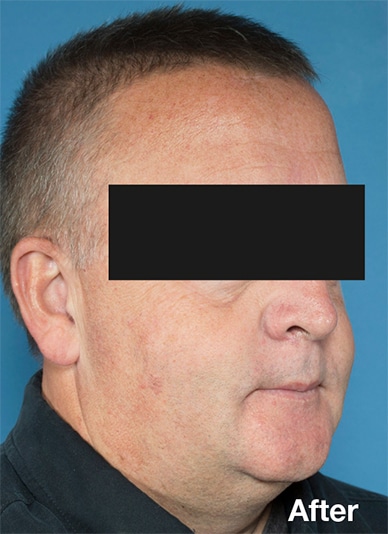Feb. 10, 2018
Maxillomandibular advancement surgery (MMA) can be an effective treatment for obstructive sleep apnea (OSA). In MMA, the bones of the upper and lower jaw are repositioned to relieve airway obstruction. The procedure also suspends the attached pharyngeal airway muscles in an anterior position and simultaneously increases pharyngeal soft tissue tension.
In contrast to all other surgical procedures for OSA, there are effects at all airway levels, from the nasal cavity to the hypopharynx. At Mayo Clinic, the vast majority of patients, even those with severe OSA, have a successful outcome. In fact, more than half of patients achieve elimination of obstructive sleep apnea (apnea-hypopnea index less than 5).
Common sentiment has been that MMA is reserved for patients with craniofacial dysmorphism (mandibular retrognathia). But, in fact, patients with normal osseous structures (that is, OSA in the context of excess soft tissue, including obesity) are often surgical candidates and have similarly good outcomes.
Another view is that MMA is a "salvage" surgical option after other soft tissue procedures, such as uvulopalatopharyngoplasty (UPPP), have been tried and failed. MMA should be considered for any patient with moderate to severe OSA if surgical management is desired.
Pre-surgical virtual scanning with 3-D imaging

Pre-surgical virtual scanning with 3-D imaging
Pre-surgical virtual scanning with 3-D imaging maximizes accuracy and efficiency in the operating room.
 Appearance before maxillomandibular advancement surgery
Appearance before maxillomandibular advancement surgery
Patient's facial appearance before maxillomandibular advancement surgery.
 Appearance after maxillomandibular advancement surgery
Appearance after maxillomandibular advancement surgery
Patient's facial appearance after maxillomandibular advancement surgery. Most patients judge that their facial appearance is improved after MMA.
In this craniofacial operation, pre-surgical virtual scanning with 3-D imaging is utilized to maximize accuracy and efficiency in the operating room. After the operation, patients are typically monitored overnight in an ICU setting, with an overall two- to three-night inpatient hospital stay.
Pain is typically less than that encountered with soft palatal procedures, such as UPPP, and at discharge, most patients' pain can be managed with non-opioid analgesics. Manipulation of facial sensory nerves during surgery results in paresthesia that actually blunts the pain response in the short term. Importantly, since current internal bone fixation devices utilized with MMA don't require jaw wiring, patients can begin eating a soft mechanical diet immediately.
Changes in facial appearance are variable depending mostly on the preoperative anatomy (dysmorphic versus nondysmorphic) and the degree of obesity. Studies show that 70 percent of patients judge that their facial appearance is improved after MMA; 20 to 25 percent report essentially no change in appearance. Long-term negative sequelae are rare, but this operation must be viewed like other orthopedic surgeries — the final result and condition will occur in nine to 12 months.
Recovery proceeds over approximately six weeks, with a gradual return to normal work or school activities commencing in most patients by three weeks. Postoperative polysomnography is usually performed sometime after three months, when soft tissue edema has resolved.